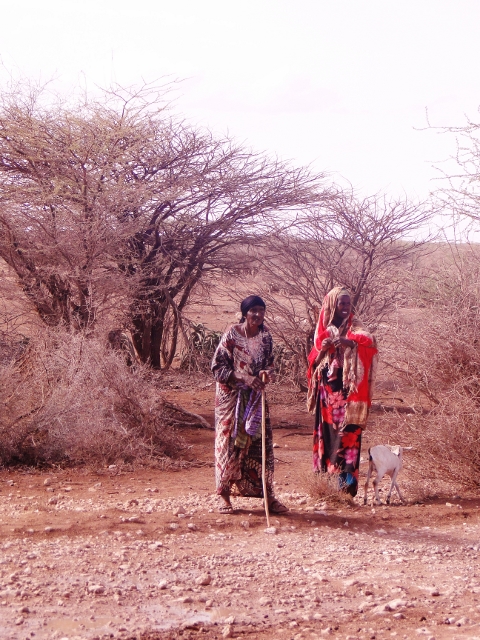One of my final assignments in Hargeisa was working as a translator for a film crew making a documentary about Edna Adan (view previous post) and her accomplishments in Somaliland. The documentary is based on a bestselling novel published in September 2009. The main theme of the book is the oppresion of women worldwide. My task was to translate for a famous American actress and the New York Times bestselling author behind the book while they interviewed Somali women about their medical plights. I travelled with this film crew to a village, Qumburaaha, and to Baligubadle, a city on the Ethiopian border. I'm sure many of you have written the book upon which this documentary is based, however, for copyright purposes, I can't give any further information until the film is released, nor share all of my interesting photographs and videos. Nevertheless, here are some of the photos that won't get me arrested (crossing my fingers).
The film crew was staying at one of the best, if not the best, hotel in Hargeisa; The Ambassador.
The entire film crew, including camera men, organizer, translators, etc. travelled in SUVs. There were about ten cars in total.
After several months of draught, the rain season has finally begun in the country. I never thought I'd be so excited to see rain.
This is Amal, my namesake. She's the girl from the "Favorite Videos" post that I asked to count to ten.


The first time I saw a newborn camel. It was a few days old and pure white.
We were forced to make several stops during our road trip. On one occasion, a tire on one of the SUVs slashed its tire. The cameramen on the SUV with the slashed tire hurried to transport all of their equipment to another vehicle in order to keep up with the other vehicles. By the time all of their equipment was loaded onto the other vehicle, the Somali drivers had already changed the tire. The foreigners were schocked as to how quickly and efficiently the drivers were able to change the tire. 

These shelters are usually used to provide shade for a family's animals.
Unfortunately, one of our SUVs hit and killed a camel. On our way back, we paid approximately $350 to recompensate the owner.
Once we arrived in Qumburaaha, the inhabitants of the village held a welcoming ceremony for Edna. They used the plants held in this child's hands to make noise on drums made of goat skin.

While in Baligubadle, I asked a young schoolgirl to get a traditional Somali toothbrush from a tree. For some reason, it's rude to drink and eat in public (for example, drnking a bottle of water while walking), but it's completely acceptable to brush your teeth in public.
These water tanks collect water from the roof.
A young woman that just delivered a baby at the clinic. As a translator, I translated the release forms for women interviewed for the documentary to sign. The most shocking part of my task was that almost all of the women were not able to sign the release forms. It was not uncommon for the women to ask me, in Somali, if I could sign the release forms for them. Instead, I would hold the pen in the blank spot where they were supposed to sign and inform them that any signature was acceptable.
This sign is encouraging mothers to breasfeed their babies as soon as they're born.
A poster on the walls of Edna Adan's clinic in Baligubadle. Loosely translated, it says to remain faithful to spouse in order to prevent the spread of sexually transmitted diseases.
These three young women are wearing traditional Somali clothing. Rumor has it that one of the drivers on the road trip liked the girl on the far left so much, he was going to send over some elders from his tribe the next day (it is Somali custom to have a meeting of sorts between elders on both the woman and man's side so that the man may ask for permission to marry the woman).
The leaving ceremony.

































































